- News
- Reviews
- Bikes
- Accessories
- Accessories - misc
- Computer mounts
- Bags
- Bar ends
- Bike bags & cases
- Bottle cages
- Bottles
- Cameras
- Car racks
- Child seats
- Computers
- Glasses
- GPS units
- Helmets
- Lights - front
- Lights - rear
- Lights - sets
- Locks
- Mirrors
- Mudguards
- Racks
- Pumps & CO2 inflators
- Puncture kits
- Reflectives
- Smart watches
- Stands and racks
- Trailers
- Clothing
- Components
- Bar tape & grips
- Bottom brackets
- Brake & gear cables
- Brake & STI levers
- Brake pads & spares
- Brakes
- Cassettes & freewheels
- Chains
- Chainsets & chainrings
- Derailleurs - front
- Derailleurs - rear
- Forks
- Gear levers & shifters
- Groupsets
- Handlebars & extensions
- Headsets
- Hubs
- Inner tubes
- Pedals
- Quick releases & skewers
- Saddles
- Seatposts
- Stems
- Wheels
- Tyres
- Health, fitness and nutrition
- Tools and workshop
- Miscellaneous
- Cross country mountain bikes
- Tubeless valves
- Buyers Guides
- Features
- Forum
- Recommends
- Podcast
review
£10,999.00
VERDICT:
Super-high-end e-road bike that performs with or without power
Excellent frame and fork
High quality motor system
Top-spec build
Good ride feel
Good range
Very expensive
Not the lightest e-road bike out there
Motor is quite noisy
Weight:
13,360g
Contact:
At road.cc every product is thoroughly tested for as long as it takes to get a proper insight into how well it works. Our reviewers are experienced cyclists that we trust to be objective. While we strive to ensure that opinions expressed are backed up by facts, reviews are by their nature an informed opinion, not a definitive verdict. We don't intentionally try to break anything (except locks) but we do try to look for weak points in any design. The overall score is not just an average of the other scores: it reflects both a product's function and value – with value determined by how a product compares with items of similar spec, quality, and price.
What the road.cc scores meanGood scores are more common than bad, because fortunately good products are more common than bad.
- Exceptional
- Excellent
- Very Good
- Good
- Quite good
- Average
- Not so good
- Poor
- Bad
- Appalling
The S-Works Turbo Creo SL is a headline-grabber and a great-looking e-road bike. It's not all show: the new SL 1.1 motor system is very accomplished and a good match for the frame and fork. The new Future Shock 2.0 damping system is excellent, and the high quality build doesn't disappoint. If you can justify the spend – or, more likely, you don't have to justify it – then you're going to end up with a distinctive and well-rounded e-road bike. The other, lower-spec models offer better value for money, though.
So... let's deal with the elephant in the room first. At a penny under 11 grand, the S-Works Turbo Creo SL is the most expensive bike we've ever reviewed here on road.cc. When people say 'you could get a car for that!' when you're talking about your Sunday best bike that's worth a few thousand quid – or less, I find those conversations start even below four figures – your normal response is probably the same as mine: not a very good car. But you could get a six-year-old Mercedes E-Class for this sort of money. Or a brand new top-spec Dacia Sandero with all the options, and still have change for a bike rack. It. Is. An. Expensive. Bike.
> Find your nearest dealer here
Let's not lose sight of the fact that this is the very top spec, though. Well, excluding the £13k Founder's Edition with its blingy gold bits and special certificate; they're all gone. If you want to get rolling on the carbon Creo SL platform then exactly half the cost of this bike is the entry point, and the £5,499 Turbo Creo SL Comp Carbon is exactly the same frame and fork, Future Shock and motor system. Okay, it's still a lot of money, but that bike is still a high quality build – mechanical Shimano GRX and DT Swiss R470 wheels – and all the things I'll go on to say about the frameset and motor are also true of that bike, and all the models in between. (There's also an aluminium Creo SL for £4,249.)
I'll start with the frameset and motor, because they're the heart of the bike and have been developed in tandem.
The SL 1.1 motor is a collaboration with German giant Mahle. You may not have heard of it, but the company makes a lot of things – like Bosch, your car probably has a dozen Mahle parts in it somewhere – and it's already heavily invested in the e-bike market having acquired ebikemotion in 2018.
The SL 1.1 is designed as a lightweight system. With 240W of peak output it's nowhere near as powerful as a top-end Bosch/Shimano/Brose motor, but the lighter weight of the motor and the 250Wh internal battery means that the bike in this build weighs in at an impressive 12.3kg (13.36kg with the piggyback battery).
Specialized says the Creo SL is "the lightest e-bike in its class", which is probably true if you define its class as mid-motor e-road bikes, but certainly isn't if you include all e-road bikes: the Ribble Endurance SLe that won the ebiketips e-road bike of the year award is the best part of a kilo lighter, and that wasn't even in the top-dollar build, just Shimano Ultegra Di2 and Mavic Cosmics. Just. Anyway, compared to something like the £6k Pinarello Nytro it's certainly light – you're saving two kilos. Of that, probably just under half is the motor system and the rest is the lighter kit that the S-Works Turbo Creo SL is wearing.
> All about e-bikes: getting into power-assisted cycling?
The comparison to a Fazua-powered bike (the Nytro) is useful because in terms of motor systems the two are probably the closest match. The SL 1.1 isn't removable, but it's a similar beast: a lighter-weight mid-motor that's designed for lower-power and more rider input. The other similar motor is Bafang's M800, but we're not really seeing that on bikes coming into the UK yet.
That motor is built into a FACT 11r carbon frame; that's the same level of build as the other S-Works bikes, the ones that win Classics races and Tour de France stages. It's light and stiff, and built specifically for the SL1.1 motor. It's also, in this iridescent finish, a very pretty thing indeed. I got stopped by other riders pretty frequently, especially for the few hours it was sunny during testing.
There's plenty of tyre room in both frame and fork; the S-Works model uses the same frame and fork as the more gravel-oriented Turbo Creo SL Expert EVO which runs 38mm tyres as standard.
Geometry-wise, the Creo SL is similar to the Specialized Diverge, which is designed as a multi-surface bike with less aggressive angles and a Future Shock 2.0 damper at the front to soften the hits. The stack-to-reach ratio of the Creo SL I tested is about 1.6, which is more upright than a sportive bike (normally 1.4-1.5) or a race bike (1.4 or below). So it's not meant to feel too racy, but it's still fairly purposeful in the drops.
Power assistance
The SL 1.1 has a very good feel to it in terms of its power application. There are three assistance modes available from the top-tube-recessed control, which give you up to 100% assistance: if you're putting in 200W, the motor will add the same, up to its 240W limit.
Is that enough power? Well, it'll depend on what type of riding you do and how much assistance you want, but in reality the answer is going to be yes. This is the sort of bike that you'd buy expecting to make things easier but not effortless, and there's enough oomph coming from the bottom bracket to take you up some pretty serious climbs.
I pointed the Turbo Creo SL at the ridiculous cliff that is Prospect Place and it made it very manageable. Not easy, exactly, but a very different experience to the normal chin-on-the-stem, limit-of-your-powers climb that it normally is. So much so that when I rolled back down past the start of it half an hour later I could easily have done it again. And believe me, that's not normally a thing.
On less stupid climbs it's a useful helping hand. Sometimes on a powerful e-bike you can fly up the hills without even trying, and that's not how the Specialized feels, but the numbers don't lie: I can easily beat my fastest times on my local climbs without trying too hard. And if you're riding with other people it's simple to tailor the assistance and your effort to give yourself the ride that you want. On the climbs at least... Once you're over the assistance limit you're on your own, of course. When that happens it's a lot more enjoyable to be on a lighter e-road bike than a heavier one, and the Turbo Creo SL is easy enough to wind up to speed. There's no real noticeable resistance from the motor unit when it's not assisting.
On a rolling 6km section that's gradually downhill but with some kicks back up, the bike felt fast and planted, and getting up out of the saddle to power over the rises was rewarding – I only slowed enough for the motor to kick in once. There's more mass in the bike and it's noticeable, but it behaves like a road bike should. It's easy to pilot, and easy to forget it's an e-bike: sometimes you'll be rolling along a flat bit and the motor will kick in as you hit a rise, and you'll have forgotten all about it. Well, I did anyway.
Not so stealthy
When it does kick back in you'll be made aware of how noisy it is. This certainly isn't the quietest motor system you can get, so if you're out on your e-road bike to convene with nature then you might find it a bit of a distraction. And obviously it makes stealth cheating harder. I go out riding with someone who owns an Orbea Gain with ebikemotion's X35 motor system, and you're never really sure how much effort he's putting in and how much the motor is contributing because you can't hear it most of the time. That's not a trick you can pull on the Creo SL. It's a little bit of a disappointment.
With its massively oversized down tube and chunky deep-section wheels, the S-Works Turbo Creo SL perhaps doesn't look like it'll get top marks for comfort, but in fact I found it a very comfortable bike to ride. The 28mm S-Works Turbo Cotton tyres are a great start, big enough to kill some of the chatter, and light and supple enough to feel fast. I was riding the smaller of the two sizes I'd be comfortable on, and that meant plenty of seatpost showing which helps to tame the back end. I wasn't a huge fan of the saddle, but if you're dropping 11 grand on a bike you can probably ask for whatever saddle you want.
The star of the show, though, is the Future Shock 2.0. "With the Future Shock 2.0, you'll feel a reduction in fatigue and an increase in speed, no matter the terrain," says Specialized, and it's true: you do. I wasn't the biggest fan of the non-adjustable original version of the Future Shock but the new model, which allows you to dial in the damping and even lock the unit out, is a huge improvement. (You can see it in action here.)
I mostly ran the shock two or three clicks from locked, which I found was perfect for the mostly road riding that I put the Creo SL through. It has enough travel to soak up even some fairly large hits from unexpected potholes, and is much less prone to bobbing when you're out of the saddle than its predecessor. It's a big improvement, and a really welcome addition to the bike, especially when you're on a long ride pushing the limit of the Creo SL's range.
Range
Range, of course, is a very elastic concept when it comes to e-road bikes. This is a machine you can propel by yourself a lot of the time, and you'll have to when you're riding above 25km/h anyway. With a 250Wh internal battery and an additional 160Wh from the bottle-cage-mounted piggyback battery, the bike has plenty of capacity. My first ride on the Creo SL was a 40km loop with 600m of climbing, and that accounted for about a third of the battery; that was without me being especially cautious with the mode choice. So rides of over 100km are within range just in normal use.
To prove that – and because it was the only decent day for about three weeks – I took the Creo SL out on a loop of my favourite Mendip roads. It's a pretty tough loop: 105km, with over 1,600m of climbing including the normally deeply unpleasant New Road out of Draycott to the gliding club (top tip: any road that goes to a gliding club is probably bad news).
The S-Works made it round with a bit of juice to spare, and I hadn't been particularly careful with the assistance. Save for the first half hour when I kept the motor off to warm up a bit on a cold day, I kept the assistance on all the time at a low level, and ramped it up to maximum for the climbs. Without the smaller 160Wh piggyback battery I'd have been struggling, but the flip side of that is that without it I'd have been more careful to preserve the juice, doing a bit more of the work myself.
It's worth noting again at this point that it's not a free ride: the climbs were much, much easier than they would be on a standard bike, but over four hours of riding still feels like a workout even on an assisted bike, and I was nicely tired by the end. The benefit of having the motor is that you can get to that final climb where you're starting to feel it, check your battery, see you have plenty left and whack it on full to get you home.
Drivetrain
One thing you'll have noticed is that the Creo SL comes with a single-ring drivetrain. The 46T ring mated with an 11-42 cassette gave enough range for me to crawl up the very steepest climbs in the area, and pedal at 60km/h down quick descents.
The cassette is quite gappy, and if you're used to the close ratios of a road bike it might take a bit of getting used to, but I never found it a problem. There was no point on a 100km ride with 80km/h downhills and 25% climbs that I felt short changed.
The Creo SL gets an 11-speed XTR Di2 derailleur mated with hydraulic Dura-Ace Di2 levers; that's the proper top-end spec you'd expect for a bike as expensive as this, and it's probably no surprise that I've only got good things to say about the shifting performance.
That being said, I found the Dura-Ace hydraulic brakes a bit more finicky than other lower-spec Shimano units. They seemed to be affected by road grit more and were a lot noisier overall than the Tiagra callipers I'm running on my winter bike. The stopping itself, however, was flawless.
Conclusion
Overall, I really enjoyed riding the S-Works Turbo Creo SL. It's a really well-executed e-road bike, and the SL1.1 motor is very capable and well matched to the bike overall. The Future Shock 2.0 damper at the front works well, and you can't really have any complaints about the spec of the bike: this is money-no-object stuff, after all.
> Ultimate superbikes: 11 of the most expensive production road bikes in the world
If it was my money, and I had to attempt to justify buying one, I'd fail. Is it a better bike overall than the Ribble Endurance SLe that ebiketips made e-road bike of the year recently? Having put some decent miles into both, I'd have to say that it's only a maybe; the two are broadly comparable in terms of their overall performance and it'll depend on what you prioritise. The Specialized is more comfortable, and the Ribble is lighter and more purposeful in its geometry. The SL1.1 motor system is certainly a higher-ticket item than the ebikemotion X35 motor in the Ribble, and having the motor in the hub creates minor issues with weight distribution and wheel removal that you don't get with a mid-motor.
> Buyer’s Guide: 9 of the best e-bikes for under £1,000
But even in a Dura-Ace Di2 build with deep-section Mavic carbon wheels – the closest build I can get to the Creo SL – the Ribble is just £5,499. Is the Specialized worth as much again on top? I'd say no. On top of that, speccing Dura-Ace Di2 over Ultegra Di2 – which for me is functionally indistinguishable – can only ever be about weight and kudos, not performance. While the weight saving (about 450g) could be considered meaningful in the rarified air of 7kg superbikes it's much less so when we're talking about a 12kg electric bike, light though that may be compared to its peers.
I guess the take-home here is that if you have to justify spending 11 grand on the Creo SL you probably won't be able to, and if you don't have to (or want to) justify it then you're not going to be disappointed: it's a really nice thing. The other bikes in the Creo SL range are better value and the specs make more sense; I'd love to try one of the gravel models. Ultimately, this money-no-object build is probably overkill for the type of riding it's likely to be doing. I doubt that'll stop Specialized selling out of them.
Verdict
Super-high-end e-road bike that performs with or without power
road.cc test report
Make and model: Specialized S-Works Turbo Creo SL
Size tested: Large
About the bike
List the components used to build up the bike.
Specialized lists:
TECHNICAL SPECIFICATIONS
CHAIN Shimano Dura-Ace
CRANKSET Praxis, Carbon M30, custom offset
SHIFT LEVERS Shimano Dura-Ace Di2 Disc R9170
CASSETTE Shimano XT, 11-speed, 11-42t
CHAINRINGS Praxis, 46t, 110 BCD
REAR DERAILLEUR Shimano XTR M9050 Di2, Shadow Plus, GS cage, 11-speed
INNER TUBES Presta, 60mm valve
FRONT TIRE S-Works Turbo, 700x28mm
REAR TIRE S-Works Turbo, 700x28mm
SADDLE Body Geometry S-Works Power, carbon rails
SEATPOST S-Works FACT carbon 27.2mm, 20mm offset
STEM S-Works Future Stem w/ Integrated Computer mount
HANDLEBARS S-Works Carbon Hover Drop, 125x75mm
GRIPS Roubaix S-Wrap
FRONT BRAKE Shimano Dura-Ace R9170, hydraulic disc
REAR BRAKE Shimano Dura-Ace R9170, hydraulic disc
PEDALS Specialized Dirt
SEAT BINDER Alloy, 30.8mm
FORK Future Shock 2.0 w/ Damper, Smooth Boot, Boost™ 12x110mm thru-axle, flat-mount disc
FRAME FACT 11r carbon, Open Road Geometry, front/rear thru-axles, fully integrated down tube battery, internal cable routing, fender/rack mounts, Boost™ 12x148mm
UI/REMOTE Specialized TCU, 10-LED State of charge, 3-LED Ride Mode display, ANT+/Bluetooth®
BATTERY Specialized SL1-320, fully integrated, 320Wh
CHARGER Custom charger, 48V System w/ SL system charger plug
MOTOR Specialized SL 1.1, custom lightweight motor
WIRING HARNESS Custom Specialized wiring harness w/ chargeport
Tell us what the bike is for and who it's aimed at. What do the manufacturers say about it? How does that compare to your own feelings about the bike?
Specialized says:
We have a long history of developing the world's highest performing road bikes. Tarmac, Venge, Roubaix, Allez, Diverge''each one dominates their respective category, featuring the best technologies in the industry. And while that's a tough palmarès to follow, the Turbo Creo SL redefines e-road bike performance. It's lightweight, smooth, capable, and lively''all with the power to flatten mountains, laugh at headwinds, and go farther than you ever thought possible. It's you, only faster.
The Creo SL is the lightest e-bike in its class''literally kilograms lighter than the competition. Not only does the lightweight and stiff FACT 11r carbon frame inspire dancing on the pedals and diving into corners, but it also reduces overall system weight and increases the range.
The lightweight SL 1.1 motor doubles your effort with as much as 240 watts of silent and powerful assistance to amplify your ride. The motor's responsive torque curve delivers power perfectly in-tune with your normal riding cadence and leaves no resistance when riding unassisted.
Battery anxiety? Not on the Creo SL. With up to 80 miles of range from the internal battery, the Creo SL eats up big miles and long days. Our included range extender provides up to 40 additional miles of mountain-flattening power.
By connecting with our Mission Control App, you're able to tune the SL 1.1 motor to your riding style, record rides, and monitor the battery. The app can handle battery management automatically too, ensuring the battery will last as long as you need it to. The motor even has a built-in power meter that transmits to any ANT+ head unit. Don't want to connect? No worries'' the Turbo Connect Unit (TCU) on the top tube gives you all the control you need to ride.
With the Future Shock 2.0, you'll feel a reduction in fatigue and an increase in speed, no matter the terrain. The 2.0 iteration gives you more control via a knob atop the stem. This knob adjusts compression from fully-open to stiff, while hydraulically-damped internals control rebound. The new Smooth Boot, top cap, and Future Stem also enhance the aesthetic, so you get a clean transition from head tube to stem.
We've learned there can be more difference between two male cyclists than between a male and female. Gender alone doesn't provide enough data to specialize. It means that separating bikes as male or female is arbitrary and outdated. With this in mind, we've developed a geometry that's best-fit for all riders''one that's comfortable, snappy, and handles like a dream.
Where does this model sit in the range? Tell us briefly about the cheaper options and the more expensive options
The S-Works build, as you'd expect, is top of the pile and the most expensive bike we've ever done. If you want the FACT 11r frame then builds start at £5,499 with a choice of the road-friendly Turbo Creo SL Comp Carbon or a gravel-oriented EVO build. Above that there are Expert and Expert EVO models, both at £7,499. The £4,249 Turbo Creo SL Comp E5 gets the same motor but an alloy frame and is the cheapest build available.
Frame and fork
Overall rating for frame and fork
9/10
Tell us about the build quality and finish of the frame and fork?
Highest spec carbon frame, super lustre on the iridescent finish.
Tell us about the materials used in the frame and fork?
Specialized FACT 11r carbon
Tell us about the geometry of the frame and fork?
Reach: 384mm
Stack: 615mm
Head tube: 73°
Seat tube: 73.5°
Stack-to-reach: 1.6
Wheelbase: 1020mm
How was the bike in terms of height and reach? How did it compare to other bikes of the same stated size?
The stack-to-reach ratio of the large size I tested is 1.6, so it's reasonably upright for a road bike. It's not as relaxed as something like the Merida Silex, which has a stack-to-reach ratio of 1.64 and a much slacker head tube angle, but it's less aggressive than most sportive and endurance bikes. Given that it's designed to be capable both on- and off-road it's probably pitched about right.
Riding the bike
Was the bike comfortable to ride? Tell us how you felt about the ride quality.
Very comfortable, more so than I was expecting.
Did the bike feel stiff in the right places? Did any part of the bike feel too stiff or too flexible?
Yes, plenty of stiffness through the core of the bike.
How did the bike transfer power? Did it feel efficient?
Almost as if you weren't doing all the work 
Was there any toe-clip overlap with the front wheel? If so was it a problem?
No issues.
How would you describe the steering? Was it lively neutral or unresponsive? Neutral
Tell us some more about the handling. How did the bike feel overall? Did it do particular things well or badly?
It felt well planted, it's a bit longer than a standard road bike and the extra weight means it sometimes doesn't feel quite as agile, but overall I was very happy.
Which components had the most effect (good or bad) on the bike's comfort? would you recommend any changes?
Future Shock 2.0 is excellent.
Rate the bike for efficiency of power transfer:
9/10
Rate the bike for acceleration:
8/10
Great up to 25km/h!
Rate the bike for sprinting:
6/10
A bit heavy for good sprint response.
Rate the bike for high speed stability:
9/10
Felt very planted at high speed.
Rate the bike for cruising speed stability:
9/10
Really good at 20-30km/h with and without the motor.
Rate the bike for low speed stability:
8/10
Rate the bike for flat cornering:
8/10
Rate the bike for cornering on descents:
8/10
Rate the bike for climbing:
9/10
Made stupidly hard climbs pretty easy.
The drivetrain
Rate the drivetrain for performance:
10/10
A bit of a Di1 mish-mash but flawless.
Rate the drivetrain for durability:
9/10
Rate the drivetrain for weight:
10/10
Rate the drivetrain for value:
4/10
Dura-Ace and XTR don't major on value.
Wheels and tyres
Rate the wheels for performance:
8/10
Good overall, a little bit feisty in strong winds.
Rate the wheels for durability:
8/10
Rate the wheels for weight:
8/10
Rate the wheels for comfort:
7/10
Rate the wheels for value:
6/10
Rate the tyres for performance:
9/10
I really liked the tyres.
Rate the tyres for durability:
8/10
Good during testing but difficult to know long term.
Rate the tyres for weight:
8/10
Rate the tyres for comfort:
9/10
really supple and comfy
Rate the tyres for value:
7/10
Controls
Rate the controls for performance:
9/10
Future Shock and hover bar a great comfort combination, Di2 controls flawless as ever.
Rate the controls for durability:
8/10
Rate the controls for weight:
8/10
Rate the controls for comfort:
10/10
Rate the controls for value:
5/10
Your summary
Did you enjoy riding the bike? Yes
Would you consider buying the bike? No
Would you recommend the bike to a friend? A very wealthy friend, yes.
How does the price compare to that of similar bikes in the market, including ones recently tested on road.cc?
It's really expensive. You could buy a car etc.
Rate the bike overall for performance:
8/10
Rate the bike overall for value:
5/10
Use this box to explain your overall score
I enjoyed riding the Creo SL, and the motor system is excellent, but it's not really doing enough to justify the price tag over other brands, and even other models in the Creo SL range.
About the tester
Age: 47
I usually ride: whatever I'm testing... My best bike is: Kinesis Tripster ATR, Merida Scultura, Dward Design fixed
I've been riding for: Over 20 years I ride: Every day I would class myself as: Experienced
I regularly do the following types of riding: road racing, time trialling, cyclo cross, commuting, touring, club rides, sportives, general fitness riding, fixed/singlespeed, mtb, Mountain Bike Bog Snorkelling, track
Dave is a founding father of road.cc, having previously worked on Cycling Plus and What Mountain Bike magazines back in the day. He also writes about e-bikes for our sister publication ebiketips. He's won three mountain bike bog snorkelling World Championships, and races at the back of the third cats.
Latest Comments
- mdavidford 18 min 2 sec ago
"Dang dang" in France, if I remember my Frere Jacques right.
- lonpfrb 37 min 30 sec ago
It's easy to remove the pipe from the fasteners which are C shaped so able to hold but not trap the pipe. Filtering through traffic is then...
- brooksby 45 min 8 sec ago
And you know that because...? I'd read this elsewhere and was surprised to read the story on here - hadn't thought they were "cyclists".
- AidanR 55 min 37 sec ago
85kg weight limit?! I come in well under that, but I'm not sure I'd trust a frame with a limit that low.
- wtjs 55 min 37 sec ago
What was on offer only 2 weeks ago was either 'world' for £20 or tiny areas such as 'Blackpool area' for £5 each or something. You couldn't just...
- Simon E 1 hour 17 min ago
“fastest, lightest, and most durable road tyres yet” Yeah right. "Strong, light, cheap. Pick two."
- David9694 1 hour 41 min ago
Surely a penalty notice will have been delivered by now, which will state where the car is parked?
- stonojnr 2 hours 22 min ago
Ah just what we need, another management speak word salad set of powerpoint slides as a strategy, thats bound to get people, or sorry as the...
- Bigtwin 5 hours 25 min ago
A smidge of £8.5K. Seriously. Someone needs to have a strong coffee.









































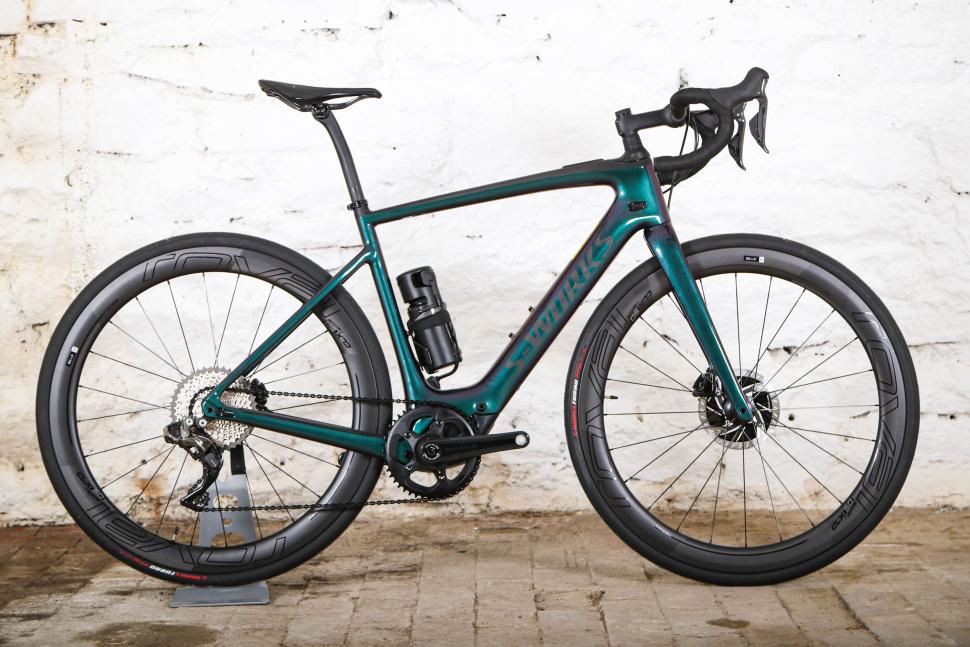

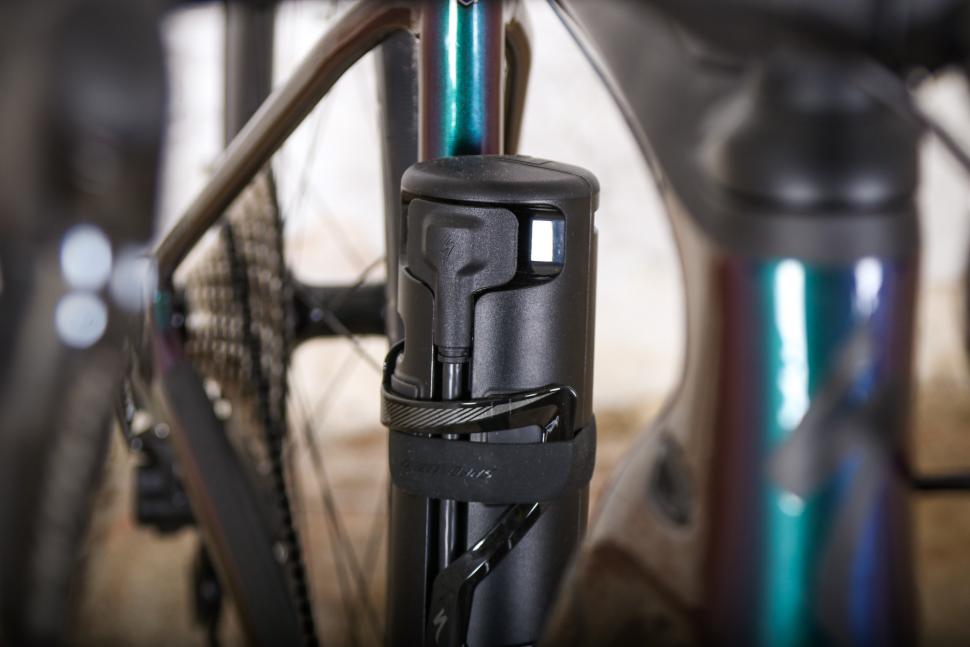


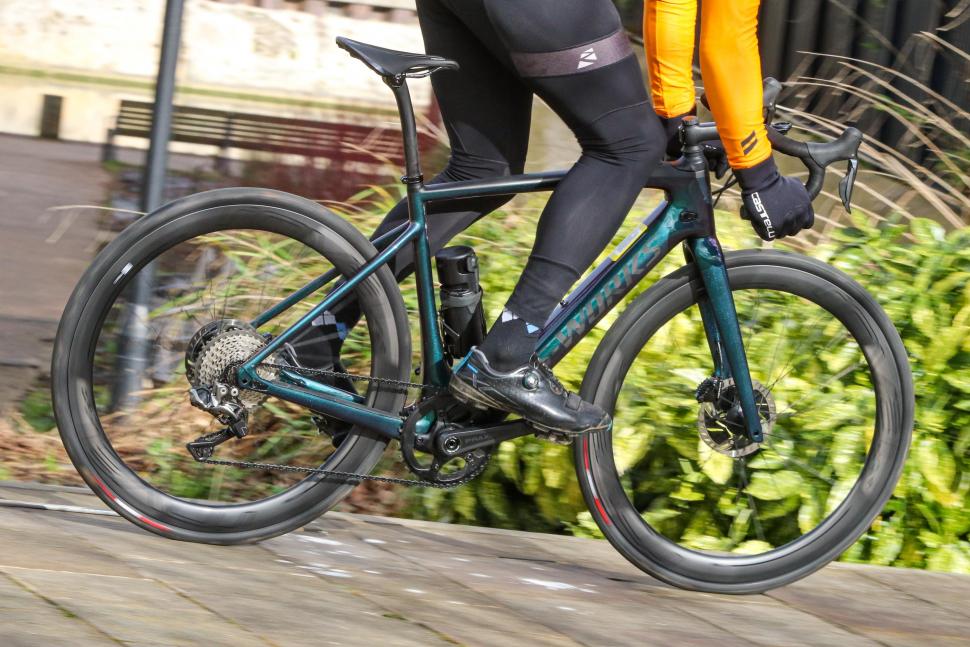
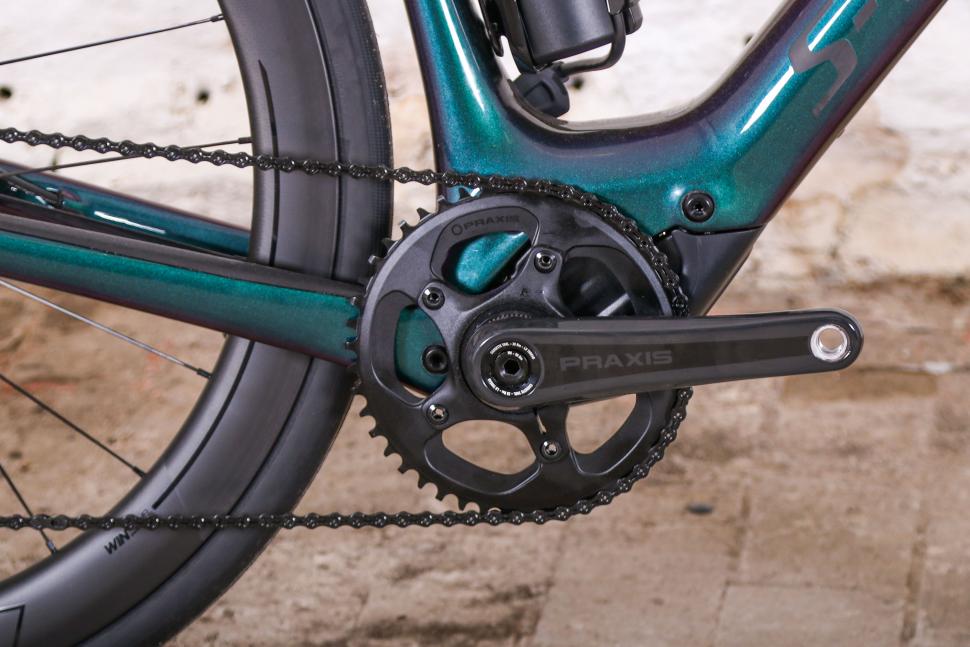

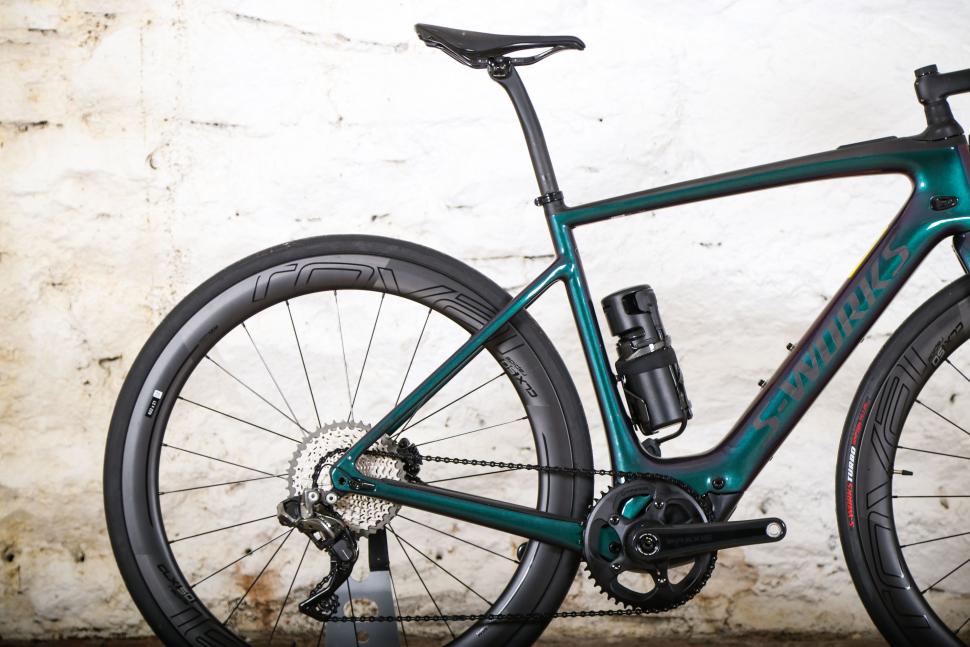
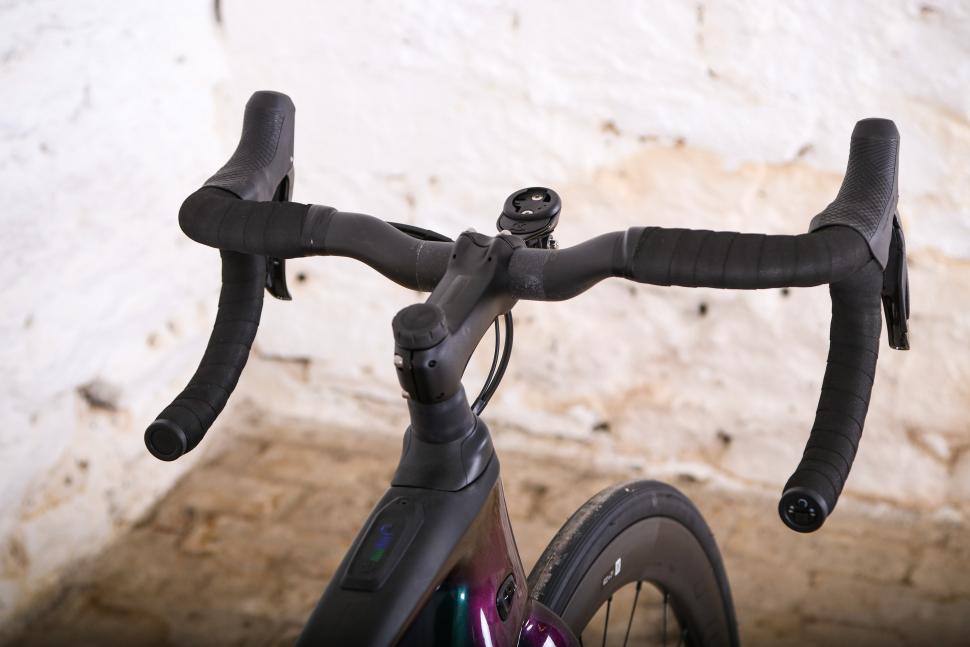

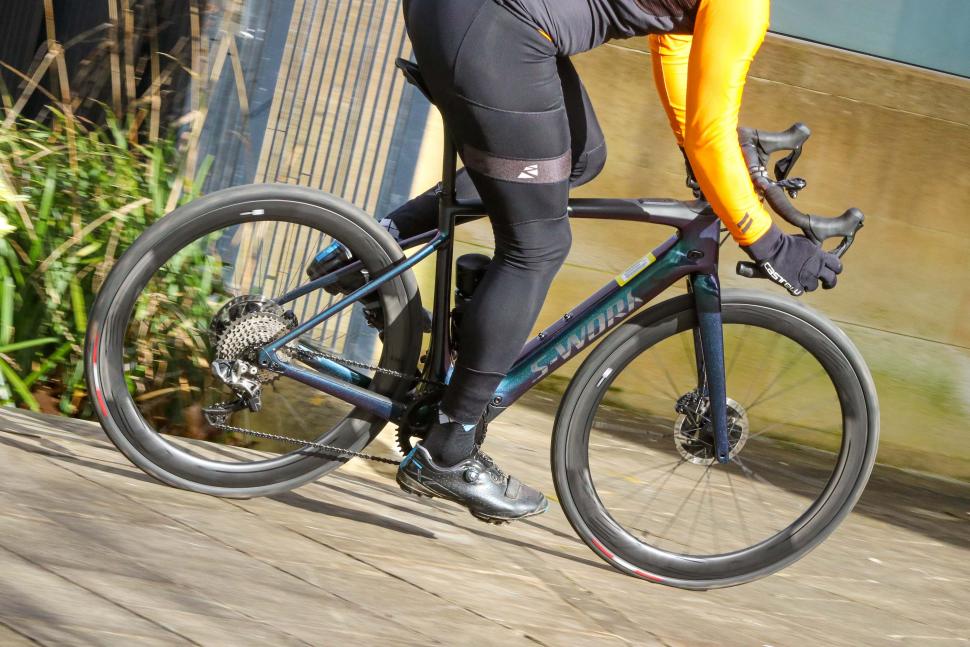
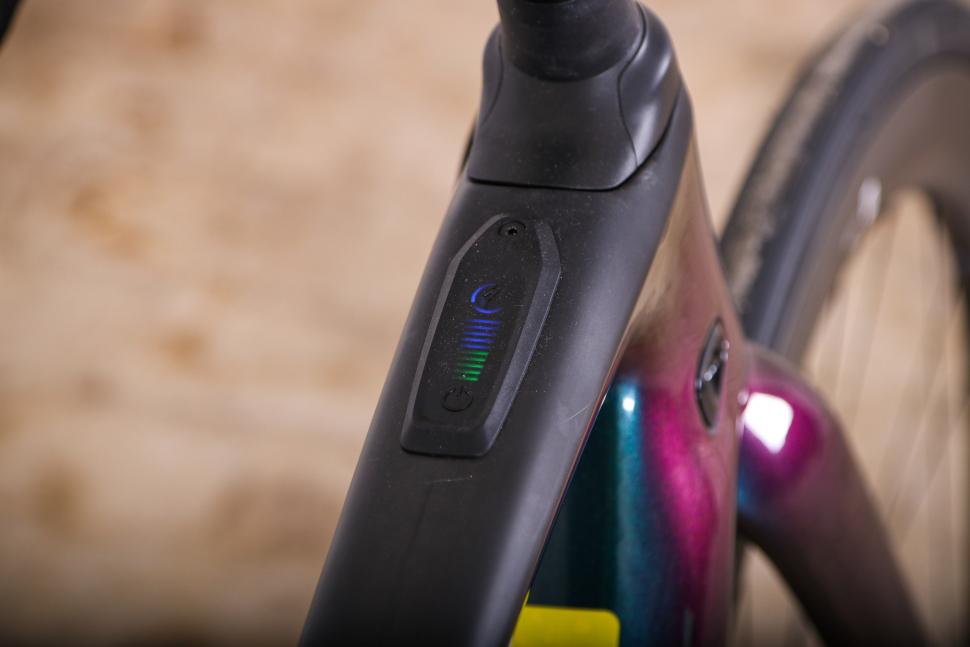
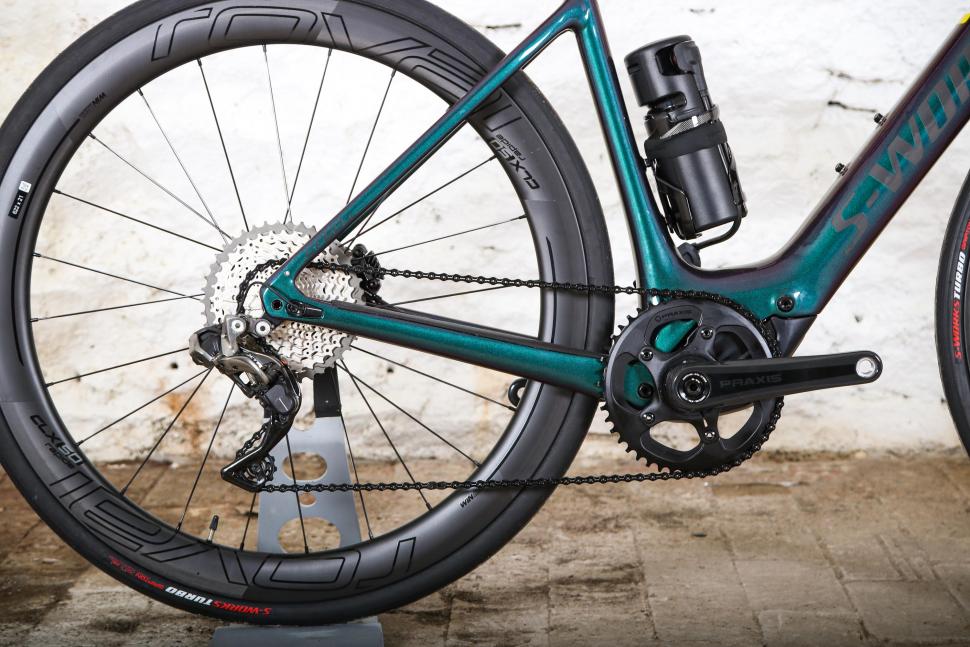


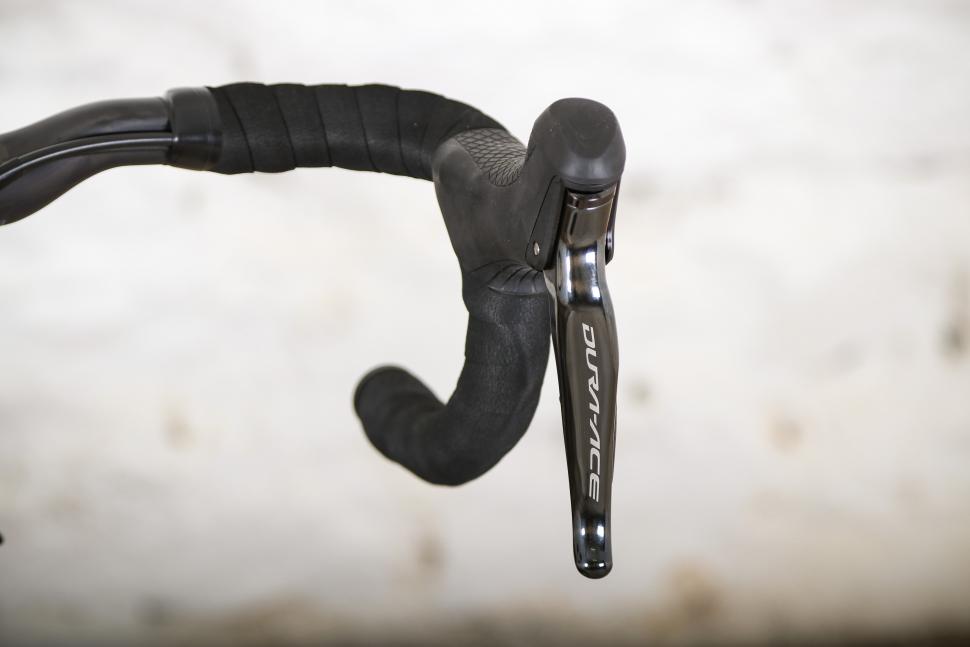
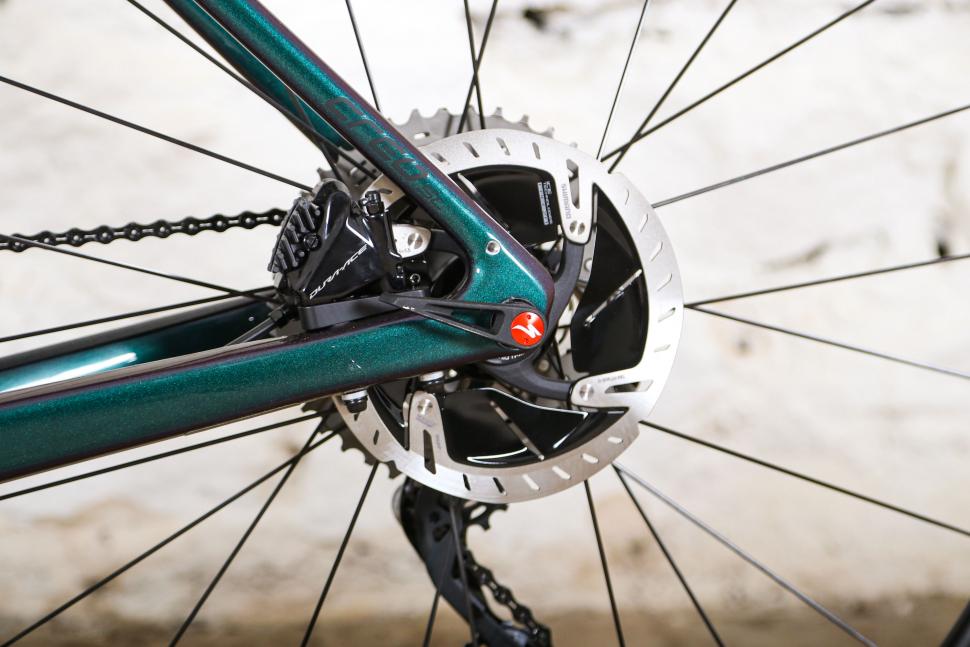

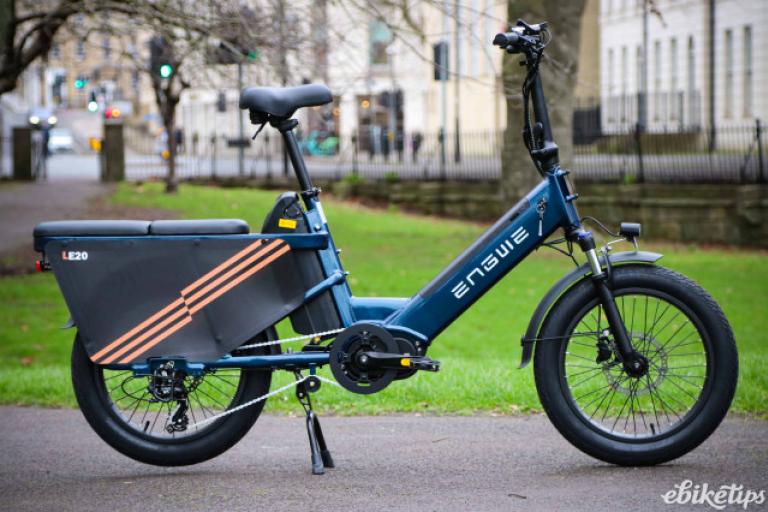
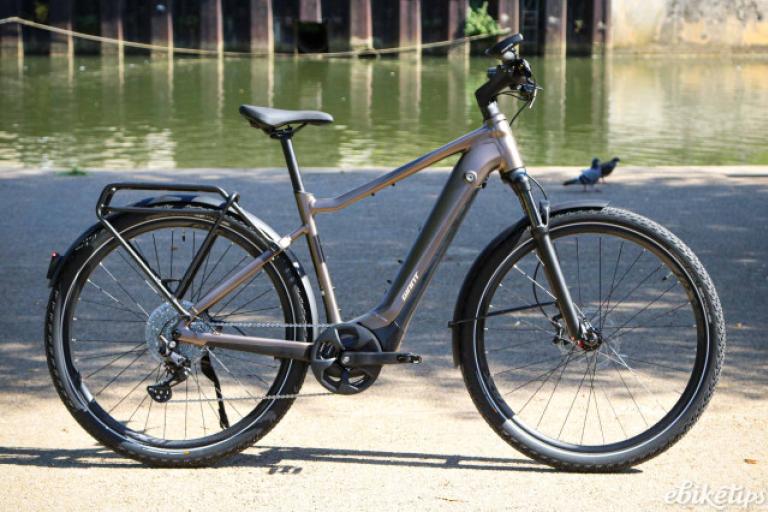
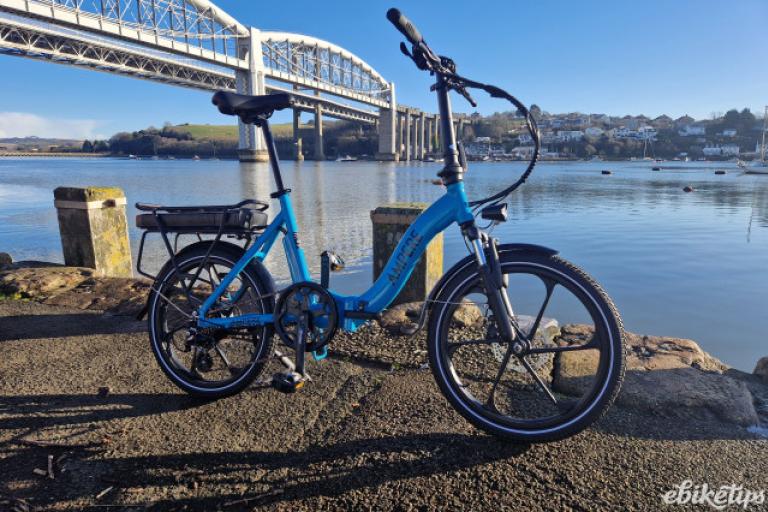
Add new comment
9 comments
Hi Dave, why have you chosen frame size l over xl? I'm 191 cm and wondering, if the xl frame will be right for me, what do you think about it? According to the Specialized site, Frame size xxl is recommended for me, in my oppinion its too big? Thank you, Michael
But is it £8200 better than a Canyon Endurace:on?
One for the Range Rover Autobiography brigade, conspicuous consumption... yeah that's me I'm minted.
The wheel hub spacing should really be called out. The rear is a 12x148 boost spacing due to the wide motor body, fine, you can find mtb hubs that fit that for a custom wheelbuild. But Specialized made the incredible decision to go with a 12x110 hub spacing on the front wheel ... a new "standard" that I can't find any after-market hubs available for? Maybe they're coming out soon? It's unimaginable to me that they want someone to spend this much money on a bike and it's impossible to get a different front wheel. I can't imagine what they were thinking when they made this choice.
That's the road "boost" sizing. Fortunately you can just take most MTB front hubs and change the adapters from 15mm to 12mm so should be fairly easy for all companies to make the adjustment
I didn't specifically make a big thing of that spacing here because if you're buying the £11k bells and whistles build I doubt you'd be shopping for a new pair of wheels that quickly. it's more of an issue on the cheaper builds where you might look at a wheel upgrade
Thanks, good point. I've been thinking about an e-road bike because I'm a fatter fellow and want to ride with my skinny younger friends in the mountains without making them wait for me at the top of hills. I'd be over the weight limit on the frame as well, but I know from experience that 24 spoke wheels are the first point of failure, unless I'm constantly retruing/retensioning them; even 28 can be dodgy. Luckily you can get some good mid-section carbon rims in 32-hole count, but it means custom wheel builds almost always. Thinking about people who would buy a road e-bike -- people who want to cover more ground in a limited amount of time, people who want to keep up with faster friends, people who want to reduce the difficulty of local geography, and fatties who want to ride with skinnier friends - I don't know if us fatties are a big enough segment quite yet.
For around half that amount you can get the Colnago E64, I'd be buying that and keeping the other few grand in the bank. It looks much better too.
Yoiks. That's a lot of cash. I get the impression that this was designed for gravel/adventure first and pure road second. Seems like it would be great for eating up long distance paths with minimal luggage and B&B and so let every 100 or so miles.